Today we'll dive into five amazingly effective techniques used by therapists during deep tissue massage sessions. In the hustle and bustle of the city, deep tissue massage therapy has become a popular choice among therapy enthusiasts. The main goal of this therapeutic method is to restore physical well-being by addressing muscle and soft tissue damage.
Content:
- Noteworthy statistics and evidence
- Key Benefits of Intensive Massage Techniques
- Deep tissue research methods
- Technique 1 – Pressure on the sacrum
- Fun fact
- Technique 2 – Elbow Pressure
- Technique 3 – Knuckle Pressure
- Technique 4 – Bilateral finger compression
- Technique 5 – Thumb Rolling
- Preparation
- Technique
- Pain perception during deep tissue massage
- Difference between deep tissue massage and sports massage
The use of specialized manipulative techniques is aimed at relieving discomfort resulting from injuries such as sprains. In addition, this type of massage is often recommended for people seeking solace and relief from musculoskeletal problems, which, if neglected, can lead to significant health complications.
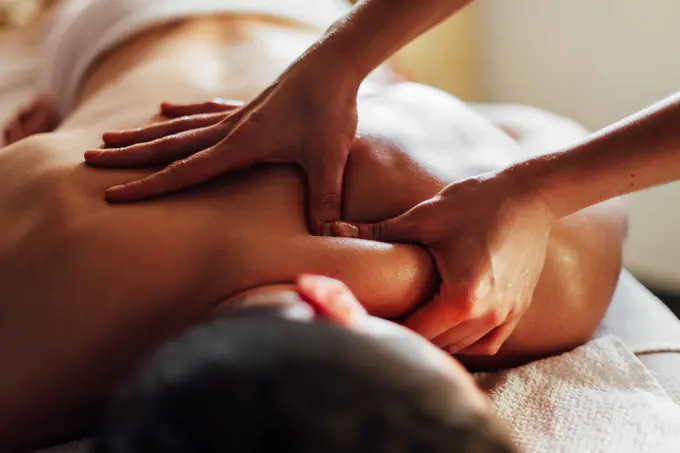
Thanks to this article, you can become familiar with the most effective techniques. Subsequently, you can contact your therapist and ask them to use these methods to alleviate your ailments. Accredited therapists can use this body of knowledge as a guide, expanding their existing repertoire of techniques to ensure the highest standards and practices are maintained.
Noteworthy statistics and evidence
⇢ In 2020, deep tissue massage took the lead as the most popular type of treatment, with more than 62% of visitors preferring this method.
⇢ Competent therapists usually spend 5 to 10 minutes preparing and warming up the muscles before applying more intense pressure.
⇢ The scope of deep tissue massage extends beyond treating the entire body; it can be combined with other styles, allowing advanced techniques to be applied exclusively to specific anatomical areas.
⇢ It is extremely important to differentiate between sports massage and deep tissue massage because although they have certain similarities, they remain different techniques.
⇢ It is not uncommon for localized discomfort to appear within 24-48 hours of intense massage.
to contents ↑How to make your own massage oil? We have the best recipes.
Read about kneading, the main technique in massage, in this article.
Key Benefits of Intensive Massage Techniques
The techniques used in deep tissue massage provide a feeling of deep satisfaction. Whether it's to combat general fatigue, specific muscle injuries, or emotional distress, the tactile stimulation inherent in this therapeutic paradigm offers a number of benefits over less intense alternatives:
⇢ Promote increased circulation of nutrient-rich blood to areas of damaged muscle and soft tissue.
⇢ Judicious application of enhanced therapeutic measures creates a sense of trust in the professionalism of the therapist, thereby accelerating relaxation.
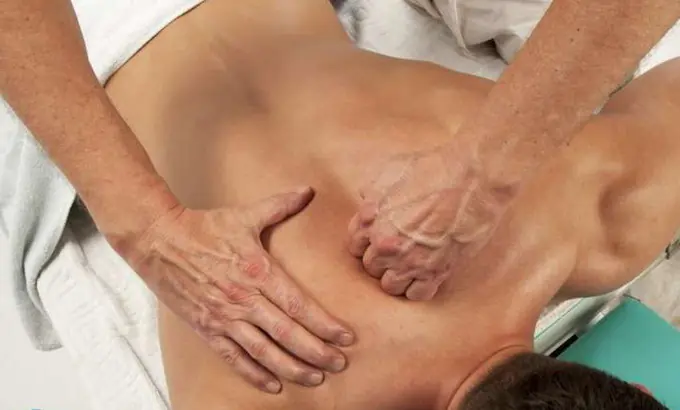
⇢ Clients often report an increased connection with their therapist due to the increased pressure applied, which brings both physical and psychological benefits.
Accumulated tension in the body often occurs after prolonged exposure to excessive stressors, whether physical or psychological. The techniques inherent in deep tissue massage accelerate the release of such tension by penetrating deep into problem areas, thereby speeding up the resolution of underlying problems.
to contents ↑When done skillfully, a deep tissue massage session seamlessly combines elements of relaxation, making it an attractive choice for an at-home spa experience.
Deep tissue research methods
A common myth that prevails among many is the belief that deep tissue treatment requires the use of consistently forceful blows, with the assumption that greater force equates to increased therapeutic effectiveness.
Contrary to this idea, the key criterion is the precise localization of the optimal pressure, whereby the coincidence of these two aspects increases the likelihood of an effective solution to the problem. Typically, these procedures are carried out using lubricating oils, although the "dry" approach, without the use of oil or cream, is popular with some practitioners.
For people with excessively oily or hairy skin, or those who want to avoid post-massage oiliness, powders provide a viable alternative. This choice not only increases friction between the therapist's hands and the client's body, but also promotes more precise pressure.
to contents ↑Technique 1 – Pressure on the sacrum
This deceptively simple yet extremely effective method serves as the ideal starting point for any comprehensive full body deep tissue massage.
- The practitioner places one hand on top of the lumbar region, just above the sacrum, and places the other on top.
- Using this two-arm configuration as a stabilizing fulcrum, the therapist gradually leans toward the client, thereby transferring the gravitational load from the client's lower extremities or knees to the hands.
- As the angle of inclination gradually increases, there is a commensurate increase in pressure in the lumbar region. This increased pressure is maintained for up to 30 seconds while both therapist and client maintain conscious breathing.
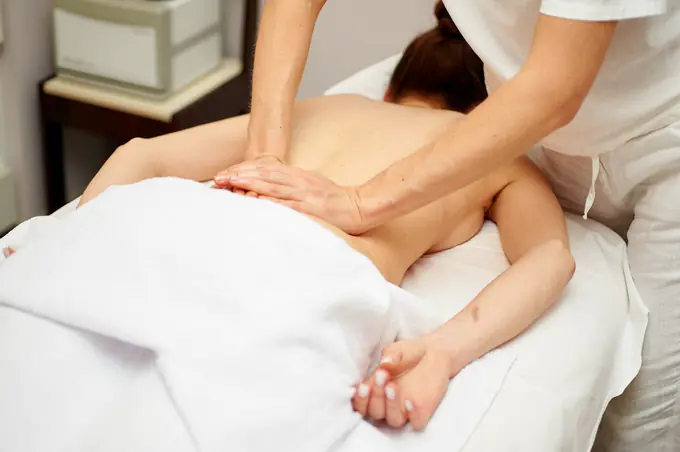
This technique provides an immediate and deep feeling of comfort, effectively preparing the body for subsequent therapeutic interventions. We argue that this approach represents an optimal prelude to a deep tissue regimen combined with synchronized respiratory control.
to contents ↑Fun fact
This technique skillfully combines one of the most important aspects of safe deep tissue therapy—the intelligent and deft distribution of the therapist's body weight. This strategic use of body weight enhances the overall force of the massage while ensuring that the massage therapist's endurance remains intact.
Experienced practitioners closely monitor verbal and nonverbal feedback from their clients to ensure that blood pressure remains within a comfortable range. If discomfort occurs, clients are encouraged to communicate their concerns promptly, creating an atmosphere of mutual respect and therapeutic sensitivity.
to contents ↑Technique 2 – Elbow Pressure
During this procedure, the therapist bends the arm at a 90-degree angle, placing the elbow directly over a pressure point on the client's body. After confirming that this placement is correct, they gradually lean towards the client, thereby increasing the compression.
The initial pressure is gentle to determine the exact location of the trigger point, after which it is gradually increased.
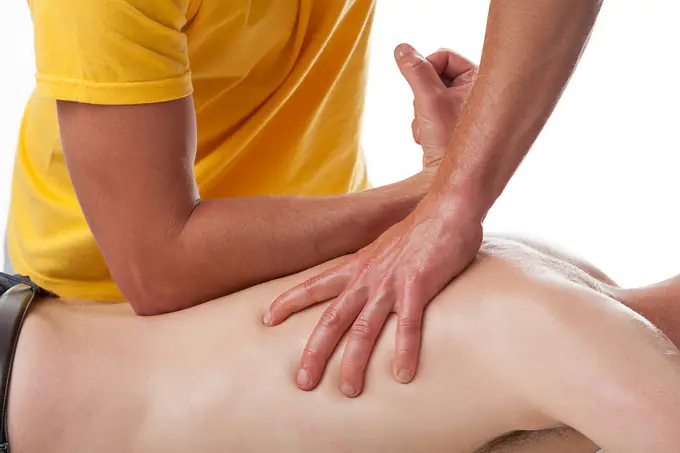
This method is often used to relieve shoulder muscle tension, especially in the scapula area. Precision is vital to prevent unintentional pressure on bony prominences, which can cause discomfort.
The main benefit is the therapist's ability to effectively direct the increased force to the shoulders, satisfying even the most demanding clients.
A slightly rounded elbow configuration at an acute angle is recommended as this provides a more comfortable and effective technique while eliminating sharp, painful thrusts. This approach requires extreme caution on the part of the therapist because the relatively small contact area of the elbow tip requires caution.
to contents ↑Technique 3 – Knuckle Pressure
Similar to the elbow pressure technique, this technique uses the therapist's articulation to direct deeper pressure than is possible by simply using the fingertips.
The therapist clenches his hand into a tight fist, gradually pressing his knuckles into the client's body. This technique can be compared to a deliberate, measured blow with a fist, devoid of a sharp, impactful effect. The four joints, supported by body weight, easily penetrate the outermost layers of skin tissue, putting pressure on the underlying soft tissue.
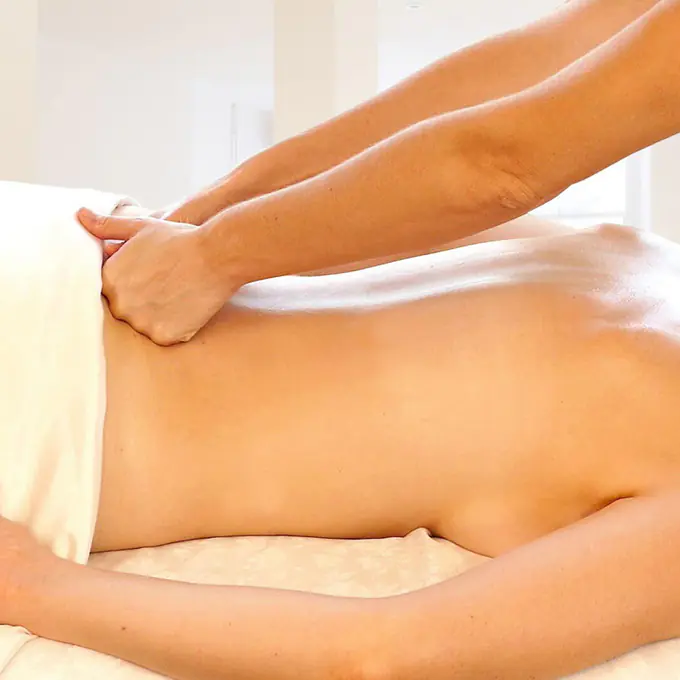
The therapist may also use rocking, twisting, and rolling movements with the fist to further target muscle and ligamentous structures, releasing accumulated tension and increasing circulation to the target area.
This method is optimally used when enhanced therapeutic intervention is required in fleshy areas of the body, such as the gluteal region and the back of the thigh.
to contents ↑Technique 4 – Bilateral finger compression
Recognizing a predilection for softer, padded tools rather than their pointed or angular counterparts, it's no surprise that people generally prefer the pads of a therapist's fingers to the bony contours of elbows and knuckles.
However, the fragility of extended fingers relative to the knuckles makes applying intense pressure challenging, especially for smaller therapists. The bilateral finger compression technique of deep tissue massage is an effective solution to this problem.

By interlocking fingers and placing them on the client's body, the therapist can apply significant force without causing harm to the client's own soft tissue. Similar to the sacral pressure technique, the therapist uses this configuration by resting on interlocked fingers to distribute significant pressure evenly across all ten fingers.
The bilateral finger compression technique often involves a comprehensive application of oil to the body and a deep penetrating stroking motion that goes beyond the typical Swedish massage. Similar to a double shot of espresso, this approach involves pouring the drink twice.
to contents ↑Technique 5 – Thumb Rolling
The fifth and final technique in our collection involves thumb rotation, which is noteworthy for its effectiveness and specificity in targeting muscle areas, primarily tired or slightly tight calf muscles.
This method has the significant advantage that it allows the therapist the freedom to apply increased pressure while maintaining an overall calming atmosphere.
to contents ↑Preparation
The optimal application of this technique occurs with the client in a supine position and the treated leg slightly elevated above the treated surface. By slightly elevating the leg, the therapist gains improved access to both the upper and lower areas, facilitating comprehensive therapeutic intervention.
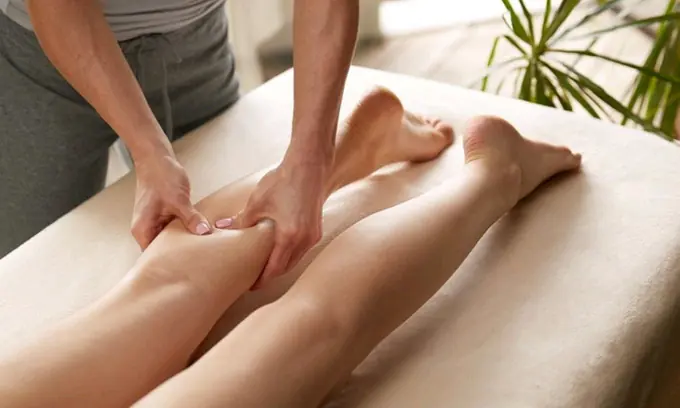
To make it easier to lift your legs, it is recommended to place your feet on top of a rolled up towel or small pillow for added comfort.
to contents ↑Technique
- Having fixed the position, the therapist grasps the lower leg just proximal to the ankle, placing the thumbs in the center of the calf muscle, directing them towards the apex of the heart.
- The tips of the toes wrap around the rest of the leg, proximal to the tibia.
- After the initial gentle pressure created by the fleshy tips of the thumbs, a circular motion follows, characterized by opposing rotations - clockwise with the right hand and counter-clockwise with the left.
- The therapist's thumbs should converge synchronously at the 12 o'clock position at regular intervals throughout the sequence, with the compression gradually increasing during each rotation.
- After several rotations in the same area, the grip around the leg loosens slightly, allowing the therapist to move the hands slightly up along the calf.
- This repeated process continues until the entire calf musculature has been deeply massaged.
- In cases of severe muscle tension, it is not unusual to return to the same area two or three times, gradually decreasing the warmth of the tissue, increasing the intensity of the compression, before finishing with gentler movements to promote a warm-up.
The thumb rolling technique expands the therapist's ability to simultaneously target both the gastrocnemius and soleus muscles.
By covering the entire lower leg, therapists have the ability to apply compressive forces from all angles while performing rotational movements of the thumb, thereby providing the client with the benefits of compression massage techniques.
к содержанию ↑Pain perception during deep tissue massage
Although the therapist will use increased force for a significant portion of the procedure, deep tissue massage should not cause unbearable discomfort or severe pain. Indeed, many people are seeking deeper treatments to help them sleep, requiring meaningful therapeutic interventions to induce deep relaxation.
Engaging in an open dialogue with the therapist remains paramount throughout treatment, allowing clients to clearly articulate instances of discomfort, allowing for rapid adaptation to ensure ongoing comfort.
The erroneous axiom “No pain, no gain” does not hold true in the context of deep tissue massage. Therapists have a repertoire that covers various types of pressure, ranging from moderate to deep to ultra-deep, depending on the condition of the affected soft tissue.
Discomfort experienced within 24 to 48 hours after treatment is often associated with the release of toxins and accumulated lactate in the body, a process that can cause mild pain. Bruising should not be evident unless the client exhibits increased tactile sensitivity.
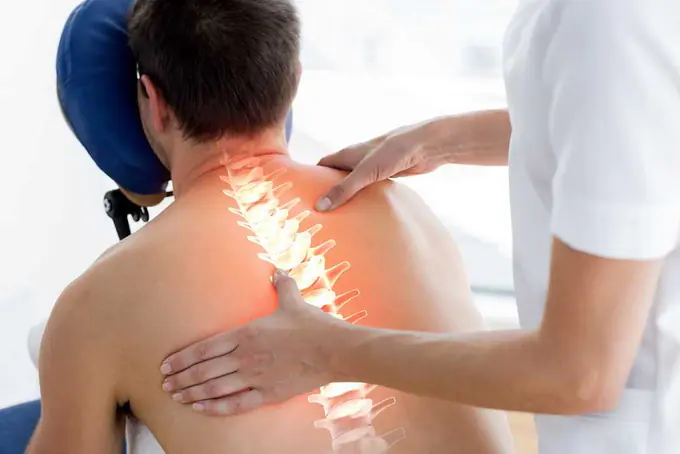
Any discomfort following treatment usually goes away within a day or two. Adequate hydration speeds recovery and improves the transport of nutrients to healing muscles.
to contents ↑Difference between deep tissue massage and sports massage
It is critical to understand that a deep tissue massage session is significantly different from its sports counterpart. Although both methods involve the use of forceful techniques and vigorous strokes that go beyond the usual relaxing massage, there are significant differences in their underlying nature. However, both styles have a common goal - to reduce muscle injuries.



